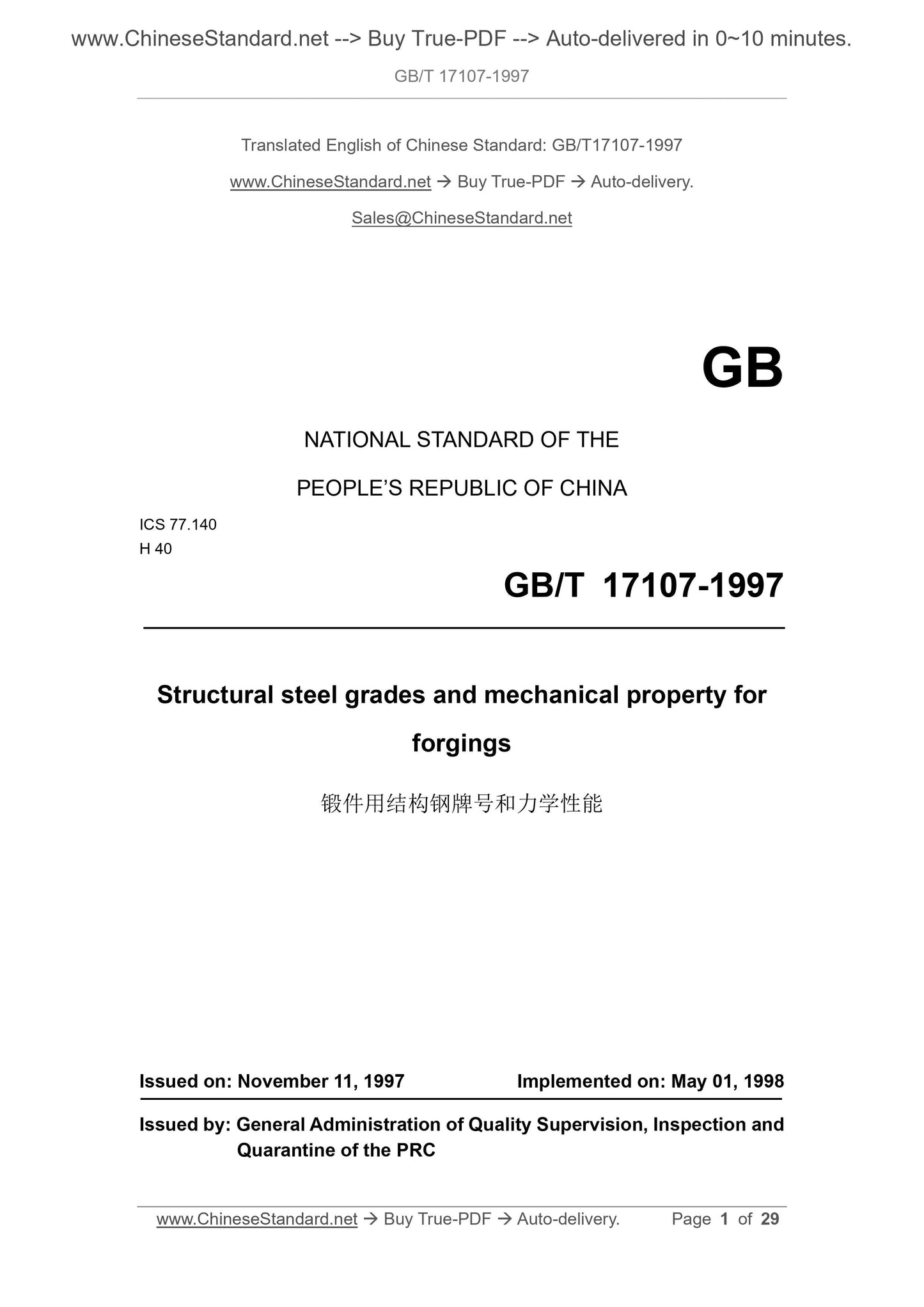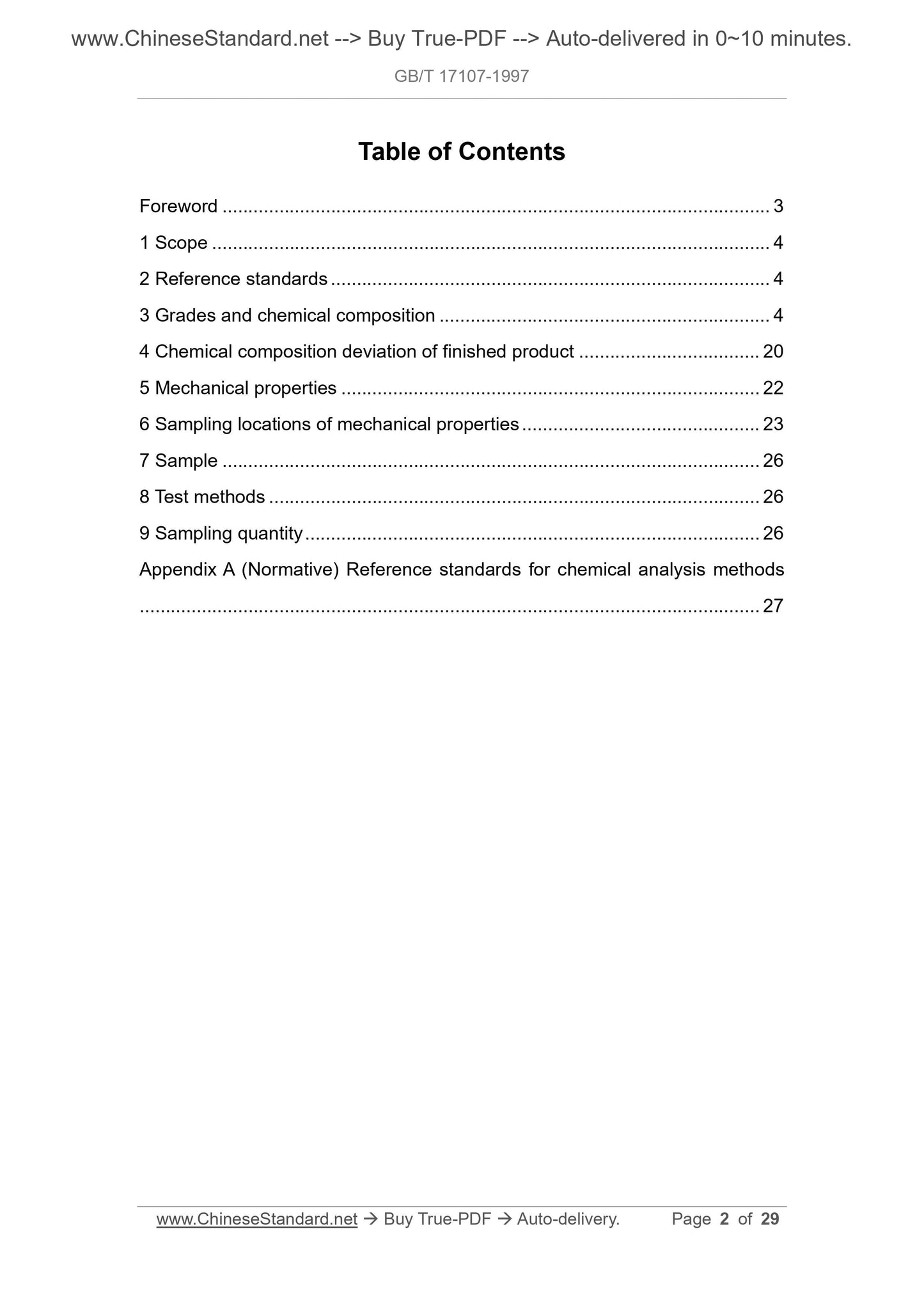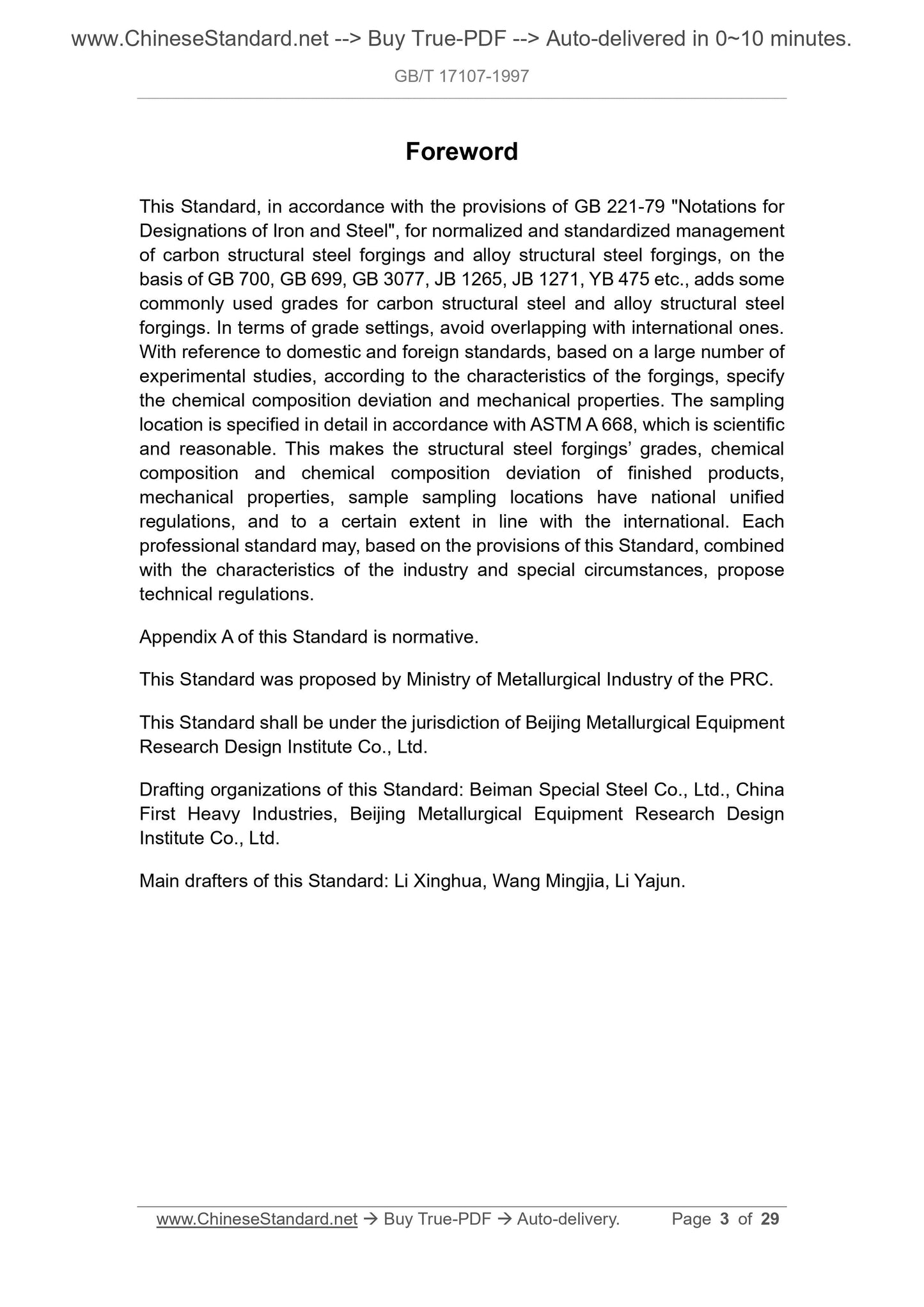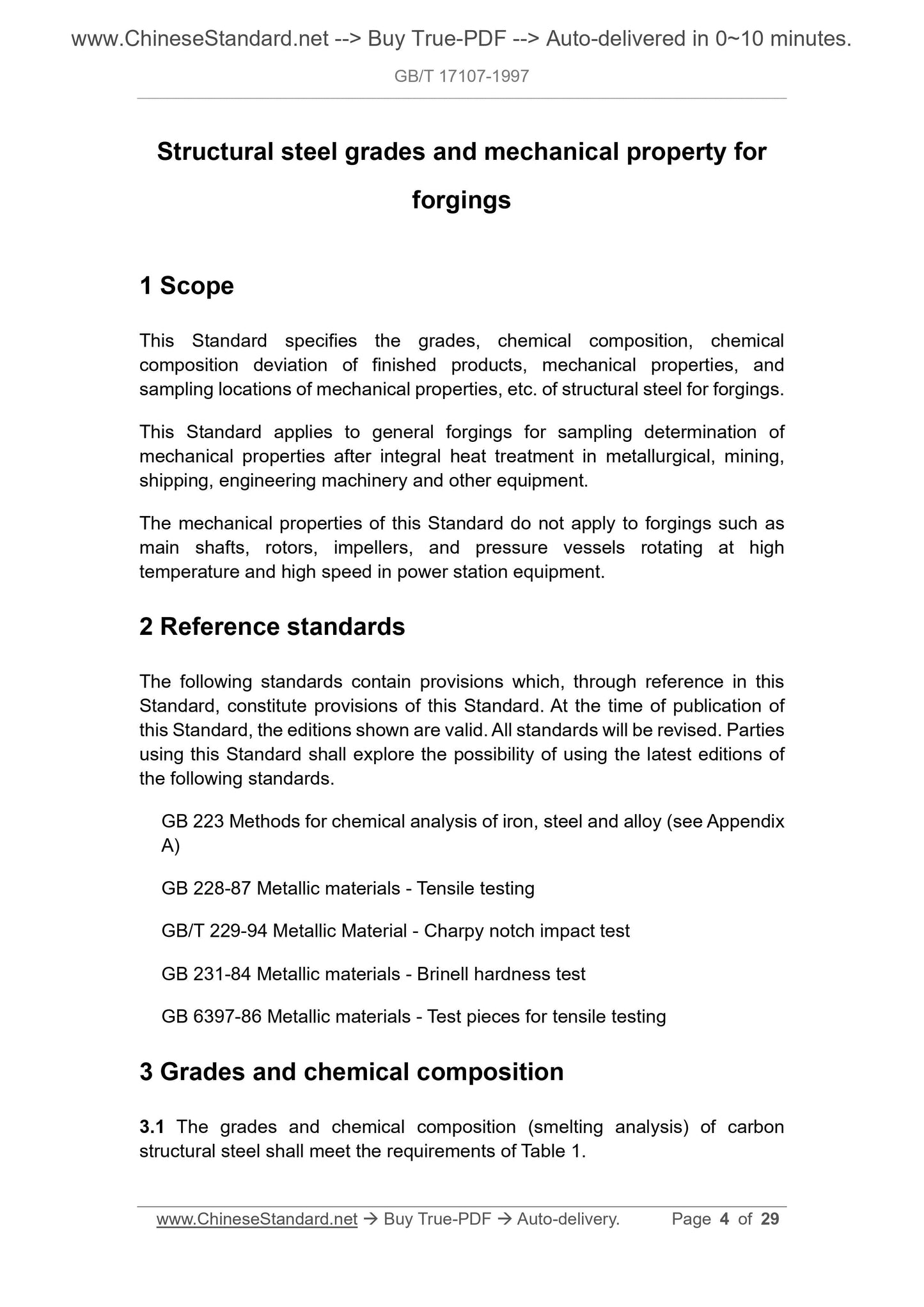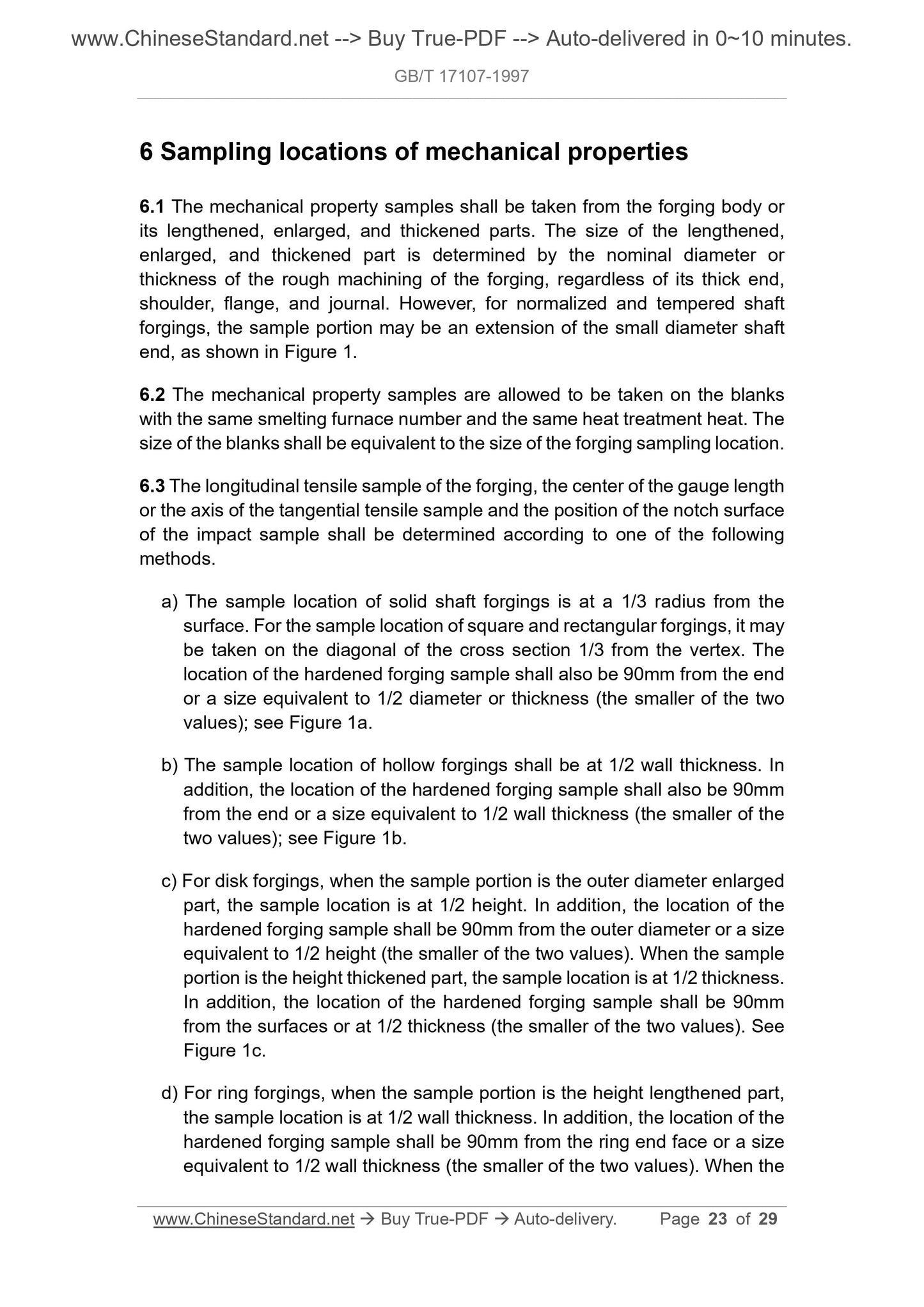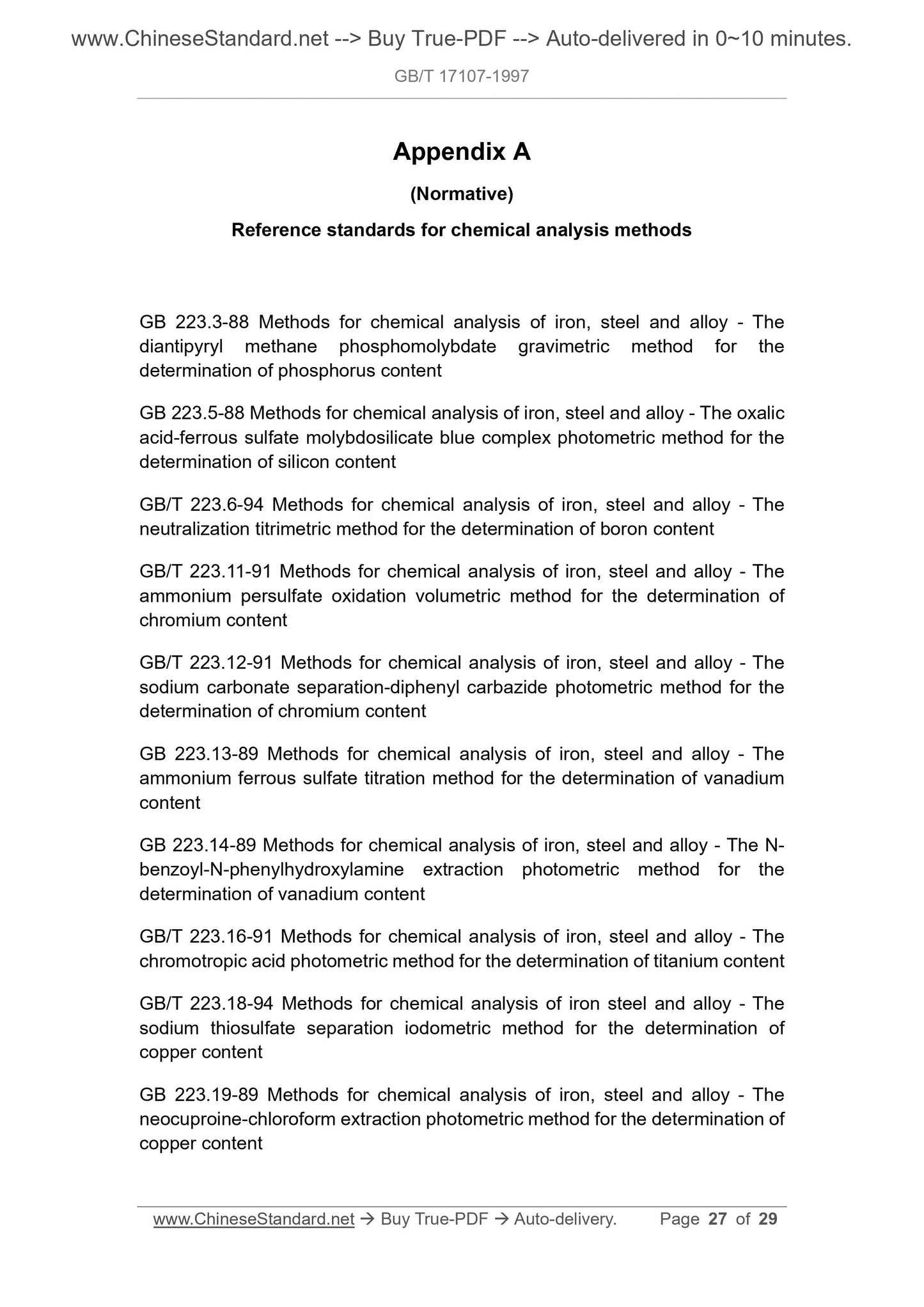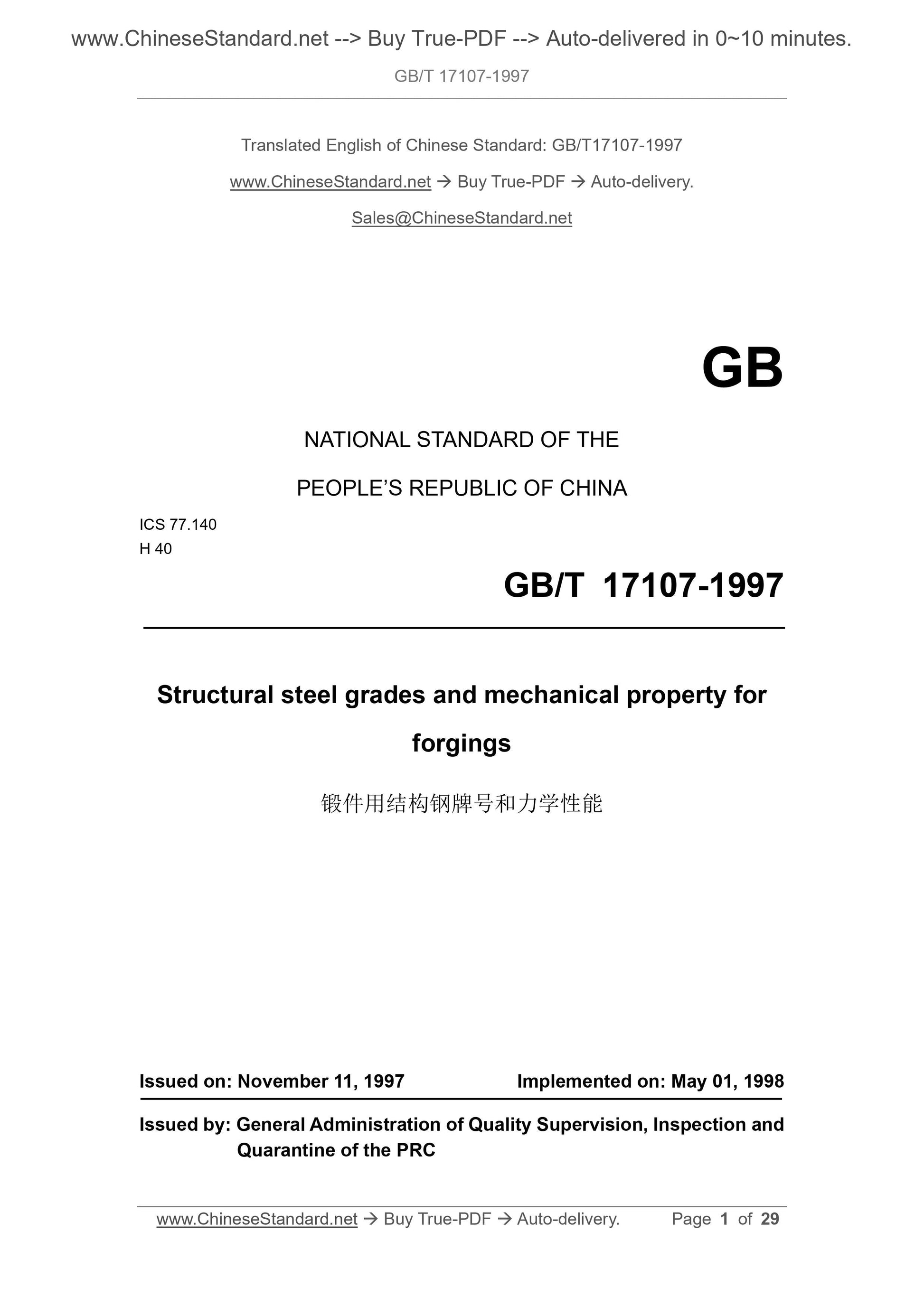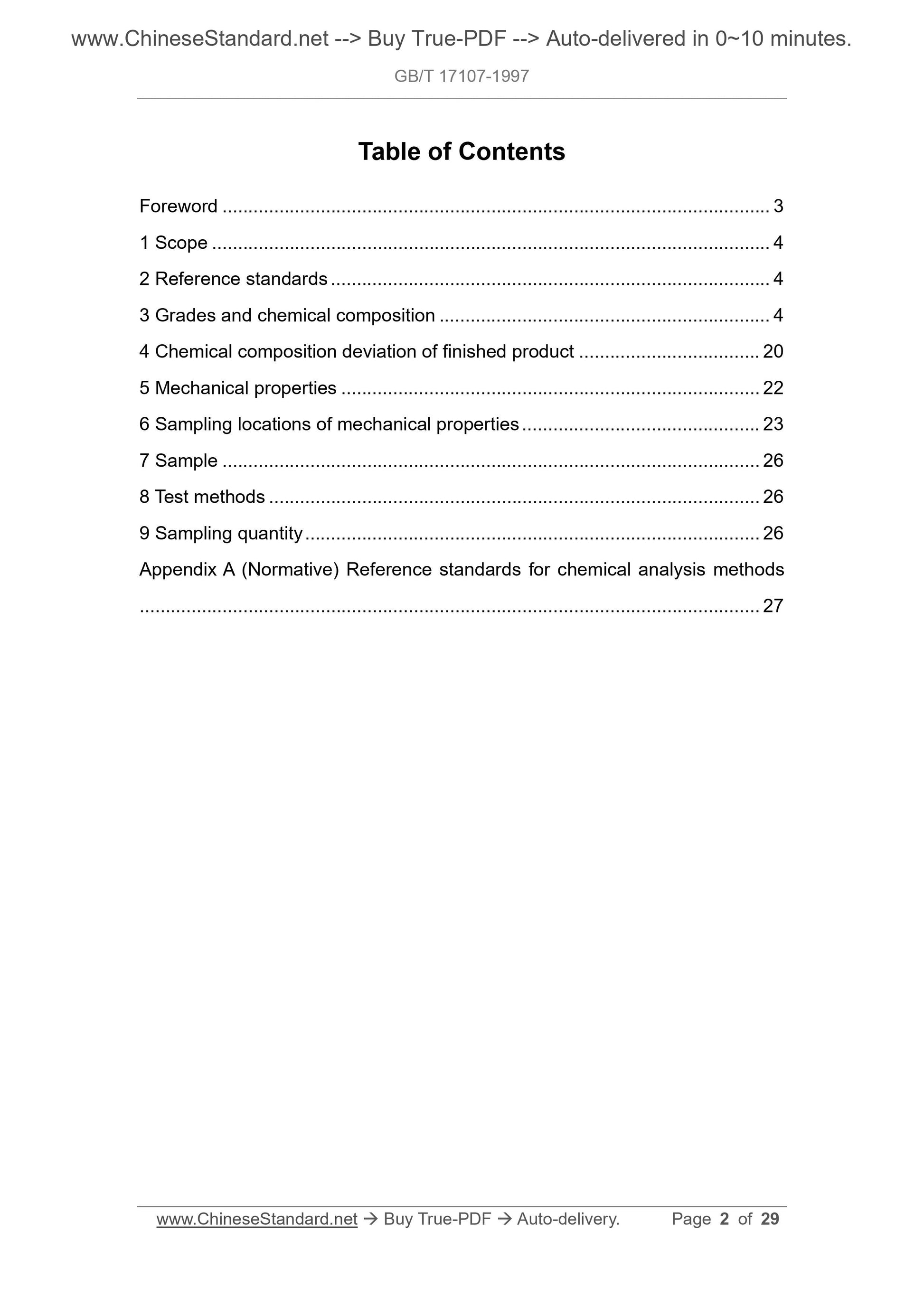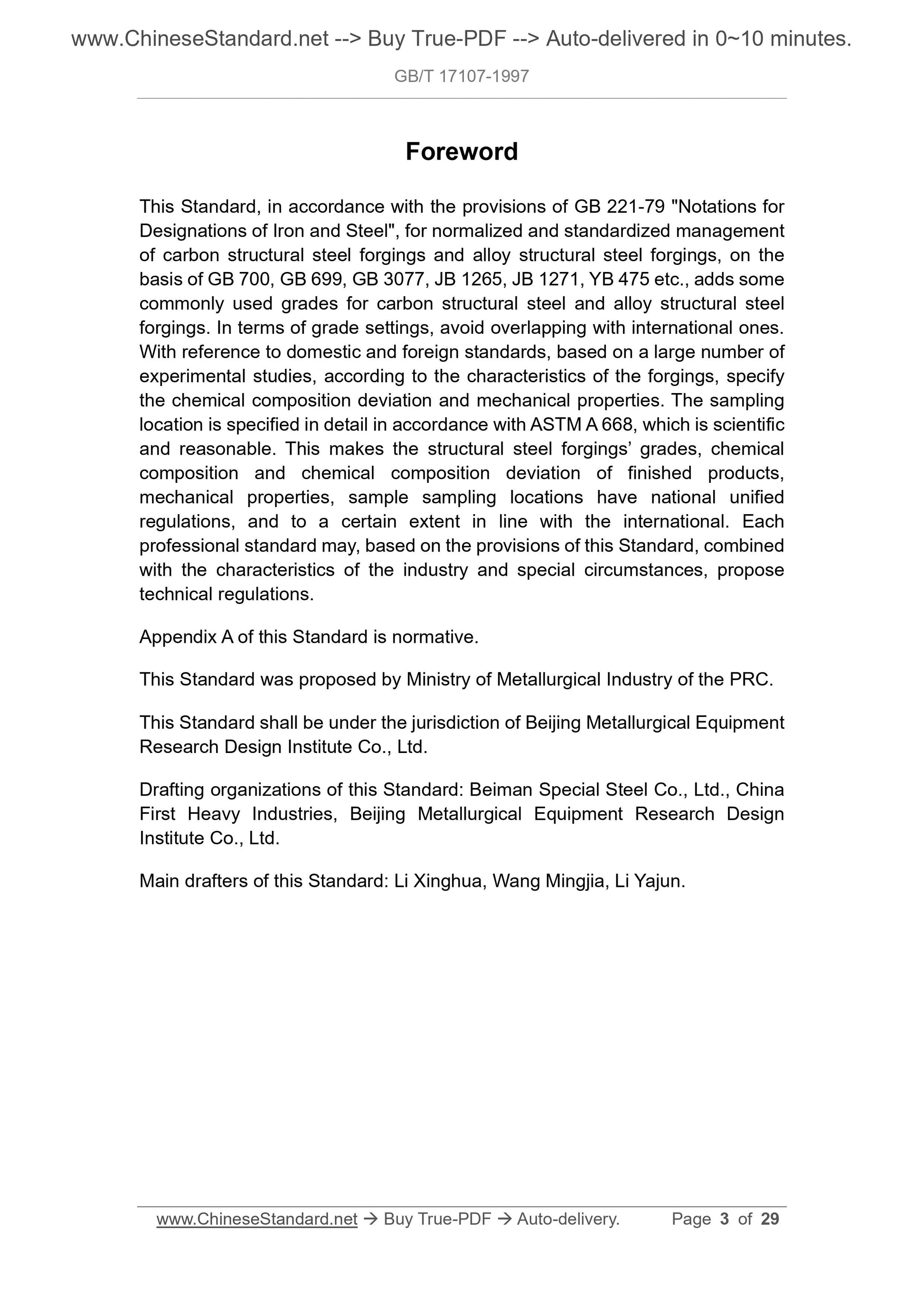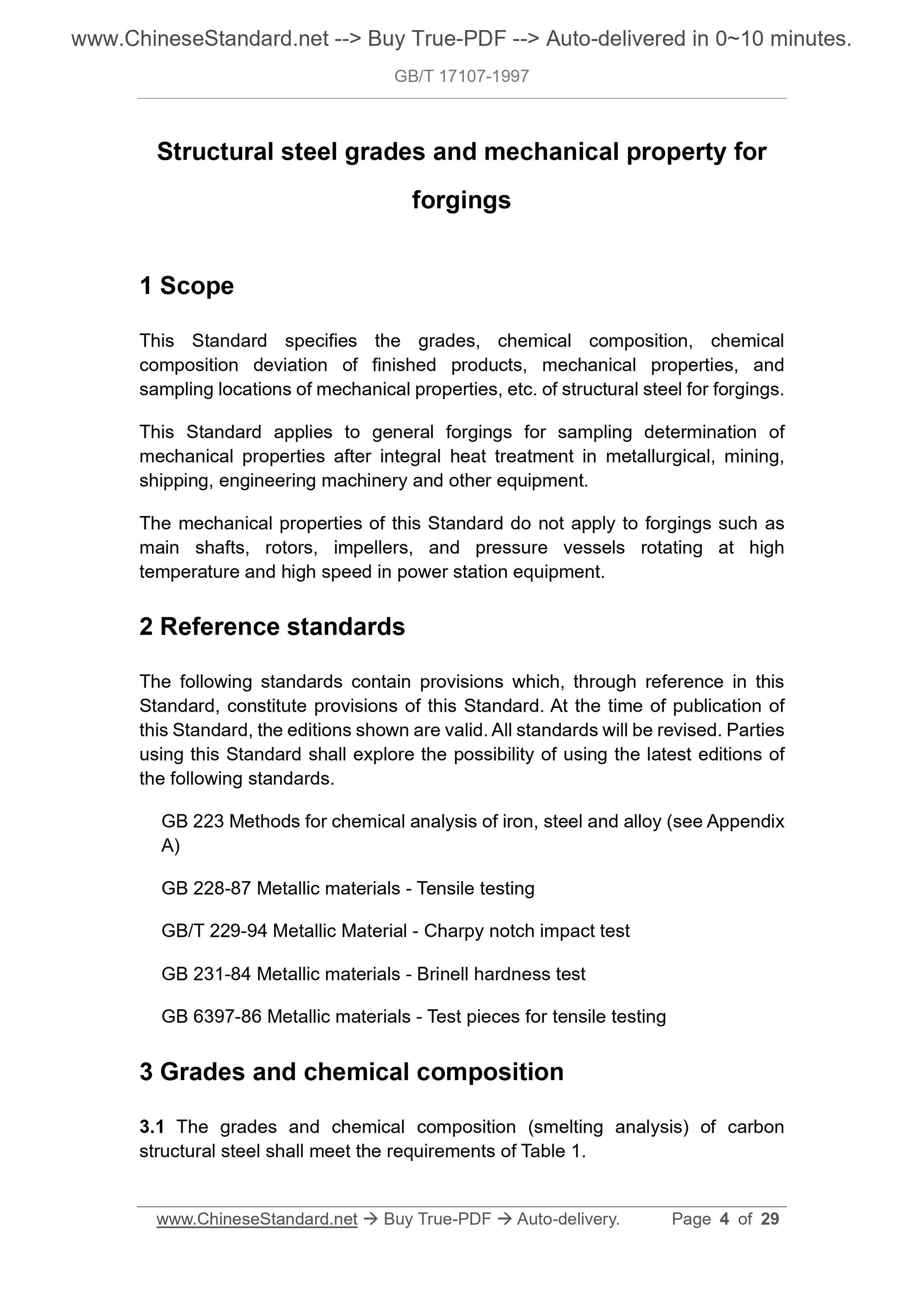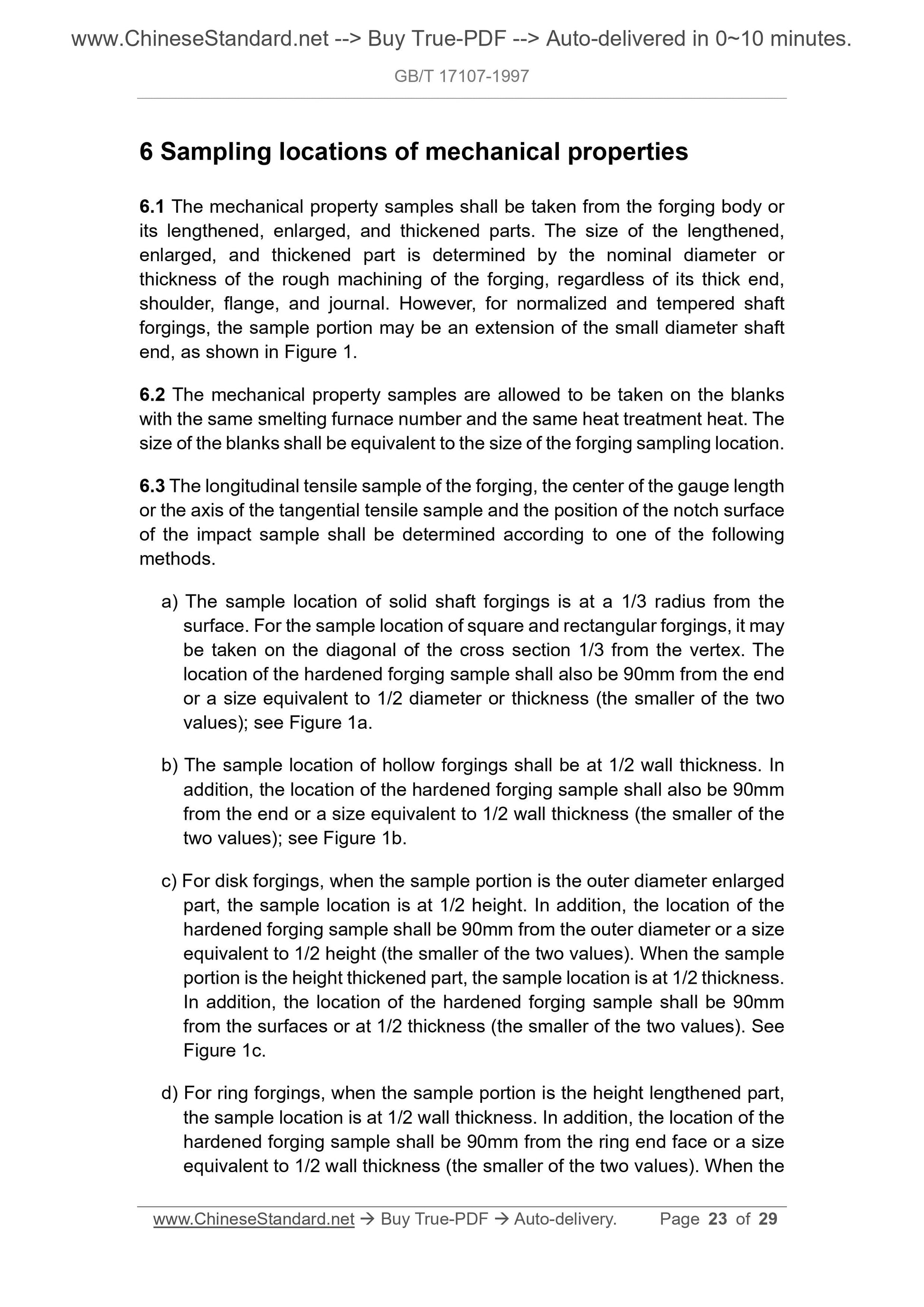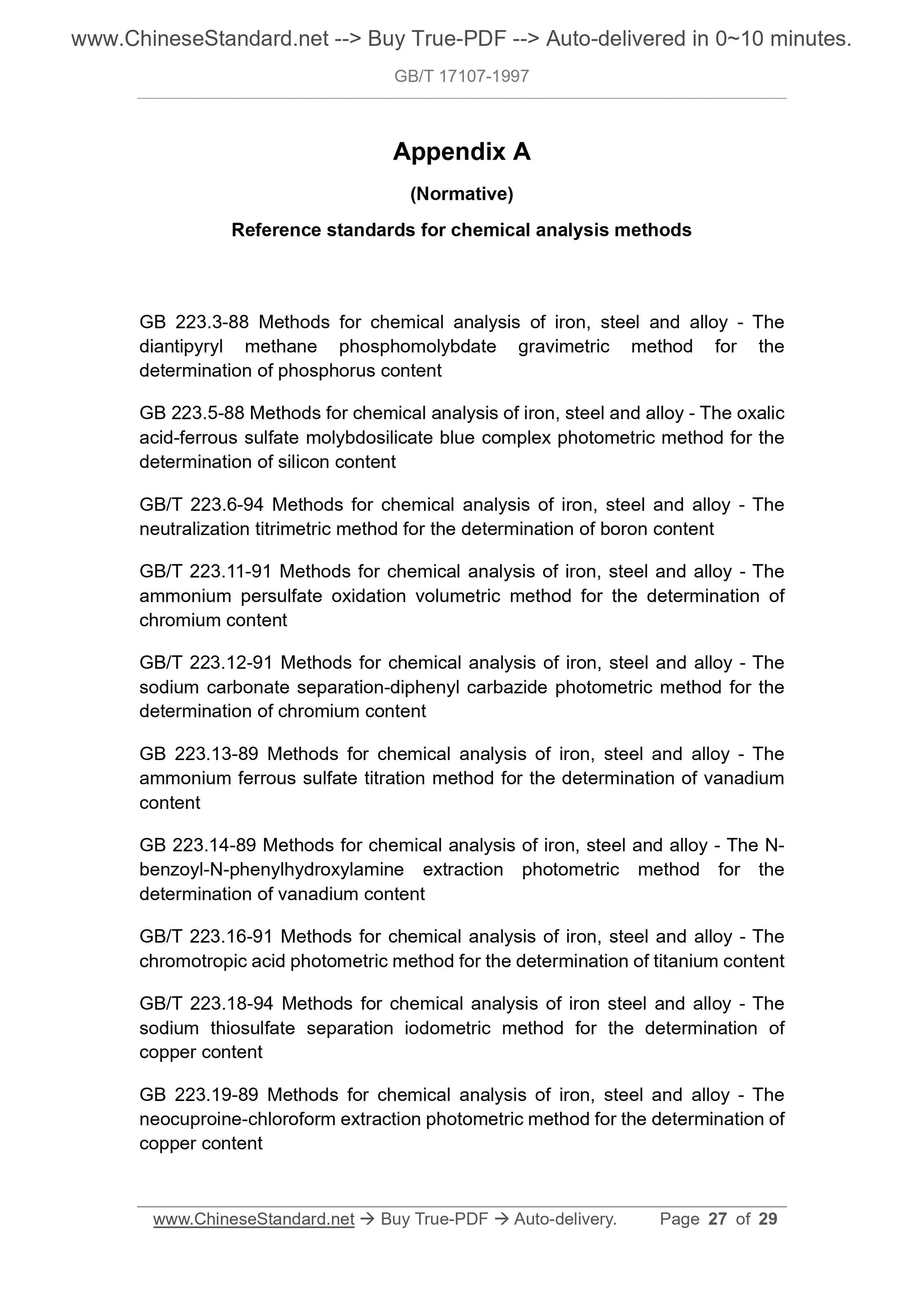1
/
of
6
www.ChineseStandard.us -- Field Test Asia Pte. Ltd.
GB/T 17107-1997 English PDF (GB/T17107-1997)
GB/T 17107-1997 English PDF (GB/T17107-1997)
Regular price
$130.00
Regular price
Sale price
$130.00
Unit price
/
per
Shipping calculated at checkout.
Couldn't load pickup availability
GB/T 17107-1997: Structural steel grades and mechanical property for forgings
Delivery: 9 seconds. Download (and Email) true-PDF + Invoice.Get Quotation: Click GB/T 17107-1997 (Self-service in 1-minute)
Newer / historical versions: GB/T 17107-1997
Preview True-PDF
Scope
This Standard specifies the grades, chemical composition, chemicalcomposition deviation of finished products, mechanical properties, and
sampling locations of mechanical properties, etc. of structural steel for forgings.
This Standard applies to general forgings for sampling determination of
mechanical properties after integral heat treatment in metallurgical, mining,
shipping, engineering machinery and other equipment.
The mechanical properties of this Standard do not apply to forgings such as
main shafts, rotors, impellers, and pressure vessels rotating at high
temperature and high speed in power station equipment.
Basic Data
| Standard ID | GB/T 17107-1997 (GB/T17107-1997) |
| Description (Translated English) | Structural steel grades and mechanical property for forgings |
| Sector / Industry | National Standard (Recommended) |
| Classification of Chinese Standard | H40 |
| Classification of International Standard | 77.14 |
| Word Count Estimation | 22,266 |
| Date of Issue | 11/11/1997 |
| Date of Implementation | 5/1/1998 |
| Adopted Standard | ASTM A668, NEQ |
| Issuing agency(ies) | State Bureau of Technical Supervision |
| Summary | This standard specifies the use of structural steel forgings deviation grades, chemical composition, refined chemical composition, mechanical properties and mechanical properties of the sampling location. This standard is used in metallurgy, mining, shipbuilding, construction machinery and other equipment in the mechanical properties of the sample is generally measured in forging overall after heat treatment. Mechanical properties of this standard does not apply to power plant equipment in high temperature and high rotating spindle, rotor, impeller and pressure vessel forgings. |
Share
